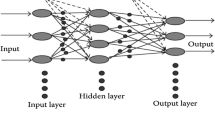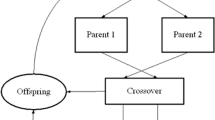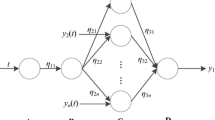Abstract
Short-term prediction of tanker freight rates (TFRs) is strategically important to stakeholders in the oil shipping industry. This study develops a hybrid TFR prediction model based on an artificial neural network (ANN) and an adaptive genetic algorithm (AGA). The AGA adaptively searches satisficing network parameters such as input delay size. The ANN iteratively optimizes a prediction network considering parsimonious variables and time-lag effects as predictors. Three parsimonious variables (crude oil price, fleet productivity and bunker price) are selected by a stepwise regression of TFR variables. The article compares the performance of its hybrid model with two traditional approaches (regression and moving average), as well as with the findings of existing ANN studies. The results of our model (root mean squared error (RMSE)=11.2 WS) are not only significantly superior to the regression approach (RMSE=21.6 WS) and the moving average approach (RMSE=17.5 WS), but are even slightly superior to the results of existing ANN studies (RMSE=14.6 WS–15.8 WS).







Similar content being viewed by others
References
Abbasi, B., Rabelo, L. and Hosseinkouchack, M. (2008) Estimating parameters of the three-parameter Weibull distribution using a neural network. European Journal of Industrial Engineering 2(4): 428–445.
Acharya, U.R., Bhat, P.S., Iyengar, S.S., Rao, A. and Dua, S. (2003) Classification of heart rate data using artificial neural network and fuzzy equivalence relation. Pattern Recognition 36(1): 61–68.
Adland, R. and Cullinane, K. (2005) A time-varying risk premium in the term structure of bulk shipping freight rates. Journal of Transport Economics and Policy 39(2): 191–208.
Alizadeh, A.H. and Talley, W.K. (2011) Vessel and voyage determinants of tanker freight rates and contract times. Transport Policy 18(5): 665–675.
Atighehchian, A. and Sepehri, M.M. (2013) An environment-driven, function-based approach to dynamic single-machine scheduling. European Journal of Industrial Engineering 7(1): 100–118.
Batchelor, R., Alizadeh, A.H. and Visvikis, I. (2007) Forecasting spot and forward prices in the international freight market. International Journal of Forecasting 23(1): 101–114.
Beale, M.H., Hagan, M.T. and Demuth, H.B. (2014) User’s Guide for Neural Network Toolbox. Natick, MA: The MathWorks.
Beenstock, M. and Vergottis, A.R. (1989) An econometric model of the world tanker market. Journal of Transport Economics and Policy 23(2): 263–280.
Bekiroglu, S., Dede, T. and Ayvaz, Y. (2009) Implementation of different encoding types on structural optimization based on adaptive genetic algorithm. Finite Elements in Analysis and Design 45(11): 826–835.
Celik, M., Cebi, S., Kahraman, C. and Er, I.D. (2009) An integrated fuzzy QFD model proposal on routing of shipping investment decisions in crude oil tanker market. Expert Systems with Applications 36(2): 6227–6235.
Chen, S., Meersman, H. and van de Voorde, E. (2012) Forecasting spot rates at main routes in the dry bulk market. Maritime Economics & Logistics 14(4): 498–537.
Datta, D., Amaral, A.R.S. and Figueira, J.R. (2011) Single row facility layout problem using a permutation-based genetic algorithm. European Journal of Operational Research 213(2): 388–394.
Dhanwani, D. and Wadhe, A. (2013) Study of hybrid genetic algorithm using artificial neural network in data mining for the diagnosis of stroke disease. International Journal of Computational Engineering 3(4): 95–100.
Duru, O. (2010) A fuzzy integrated logical forecasting model for dry bulk shipping index forecasting: An improved fuzzy time series approach. Expert Systems with Applications 37(7): 5372–5380.
Foster, W.R., Collopy, F. and Ungar, L.H. (1992) Neural network forecasting of short, noisy time series. Computers and Chemical Engineering 16(4): 293–297.
Franses, P.H. (1991) Seasonality, non-stationarity and the forecasting of monthly time series. International Journal of Forecasting 7(2): 199–208.
Glen, D.R. and Martin, B.T. (2005) A survey of the modelling of dry bulk and tanker markets. Shipping Economics Research in Transportation Economics 12(5): 19–64.
Gorr, W.L. (1994) Research prospective on neural network forecasting. International Journal of Forecasting 10(1): 1–4.
Jung, K. (2012) Development of a user interface design method using adaptive genetic algorithm. Journal of the Korean Institute of Industrial Engineers 38(3): 173–181.
Kamp, R.G. and Savenije, H.H.G. (2006) Optimizing training data for ANNs with genetic algorithms. Hydrology and Earth System Sciences 10(4): 603–608.
Kavussanos, M.G. and Alizadeh, A. (2002) The expectations hypothesis of the term structure and risk premia in dry bulk shipping freight markets: An EGARCH-M approach. Journal of Transport Economics and Policy 36(2): 267–304.
Kavussanos, M.G. (2003) Time varying risks among segments of the tanker freight markets. Maritime Economics and Logistics 5(3): 227–250.
Kellegoz, T., Toklu, B. and Wilson, J. (2010) Elite guided steady-state genetic algorithm for minimizing total tardiness in flowships. Computer and Industrial Engineering 58(2): 300–306.
Khashei, M. and Bijari, M. (2010) An artificial neural network (p,d,q) model for time series forecasting. Expert Systems with Applications 37(1): 479–489.
Kim, K. (2006) Artificial neural networks with evolutionary instance selection for financial forecasting. Expert Systems with Applications 30(3): 519–526.
Koehn, P. (1994) Combining Genetic Algorithms and Neural Networks: The Encoding Problem. Knoxville, TN: The University of Tennessee.
Koopmans, T.C. (1939) Tanker Freight Rates and Tankship Building. Haarlem, The Netherlands: Netherlands Economic Institute.
Li, J. and Parsons, M.G. (1997) Forecasting tanker freight rate using neural networks. Maritime Policy and Management 24(1): 9–30.
Lee, C., Lin, W., Chen, Y. and Kuo, B. (2011) Gene selection and sample classification on microarray data based on adaptive genetic algorithm/k-nearest neighbor method. Expert Systems with Applications 38(5): 4661–4667.
Lyridis, D.V., Zacharioudakis, P., Mitrou, P. and Mylonas, A. (2004) Forecasting tanker market using artificial neural network. Maritime Economics and Logistics 6(2): 93–108.
Majidnezhad, V. (2015) A novel hybrid of genetic algorithm and ANN for developing a high efficient method for vocal fold pathology diagnosis. Journal on Audio, Speech, and Music Processing 2015(1): 1–11.
Mehrara, M., Moeini, A., Ahrari, M. and Karubi, F. (2010) VLCC’s freight rate forecasting by using neural network. Research Journal of Internatıonal Studıes 12(14): 53–62.
O’Brien, R.M. (2007) A caution regarding rules of thumb for variance inflation factors. Quality and Quantity 41(5): 673.
Pallavi, V.P. and Vaithiyanathan, V. (2013) Combined artificial neural network and genetic algorithm for cloud classification. International Journal of Engineering and Technology 5(2): 787–794.
Randers, J. and Goluke, U. (2007) Forecasting turning points in shipping freight rates: Lessons from 30 years of practical effort. System Dynamics Review 23(2/3): 253–284.
Rardin, R.L. (1998) Optimization in Operations Research. New Jersey: Prentice Hall.
Raza, J. and Liyanage, J.P. (2010) Managing hidden system threats for higher production regularity using intelligent technological solutions: A case study. European Journal of Industrial Engineering 4(2): 249–263.
Reshamwala, N.S., Suratia, P.S. and Shah, S.K. (2014) Artificial neural networks trained by genetic algorithm for smart MIMO channel estimation for download link LTE-Advance System. International Journal Computer Network and Information Security 6(3): 10–19.
Santos, A.A., Junkes, L.N. and Pires JrF.C.M. (2013) Forecasting period charter rates of VLCC tankers through neural networks: A comparison of alternative approaches. Maritime Economics & Logistics 16(1): 72–91.
Stopford, M. (2009) Maritime Economics. London: Routledge.
Summanwar, V.S., Jayaraman, V.K., Kulkarni, B.D., Kusumakar, H.S., Gupta, K. and Rajesh, J. (2002) Solution of constrained optimization problems by multi-objective genetic algorithm. Computers and Chemical Engineering 26(10): 1481–1492.
Svozil, D., Kvasnicka, V. and Pospichal, J. (1997) Introduction to multi-layer feed-forward neural networks. Chemometrics and Intelligent Laboratory Systems 39(1): 43–62.
United Nations. (2010) Review of Maritime Transport 2010. Washington DC: United Nations.
Veenstra, A.W. and Franses, P.H. (1997) A co-integration approach to forecasting freight rates in the dry bulk shipping sector. Transportation Research Part A 31(6): 447–459.
Wijnolst, N. and Wergeland, T. (2009) Shipping Innovation. The Netherlands: IOS Press.
Xu, J.J., Yip, T.L. and Liu, L. (2011) A directional relationship between freight and newbuilding markets: A panel analysis. Maritime Economics and Logistics 13(1): 44–60.
Yun, Y. (2006) Hybrid genetic algorithm with adaptive local search scheme. Computer and Industrial Engineering 51(1): 128–141.
Zannetos, Z. (1966) The Theory of Oil Tankship Rates. Boston, MA: MIT Press.
Zhang, G., Patuwo, B.E. and Hu, M.Y. (1998) Forecasting with artificial neural networks: The state of art. International Journal of Forecasting 14(1): 35–62.
Acknowledgements
This work was supported by the Research Fund of the University of Ulsan.
Author information
Authors and Affiliations
Corresponding author
Rights and permissions
About this article
Cite this article
Eslami, P., Jung, K., Lee, D. et al. Predicting tanker freight rates using parsimonious variables and a hybrid artificial neural network with an adaptive genetic algorithm. Marit Econ Logist 19, 538–550 (2017). https://doi.org/10.1057/mel.2016.1
Published:
Issue Date:
DOI: https://doi.org/10.1057/mel.2016.1




